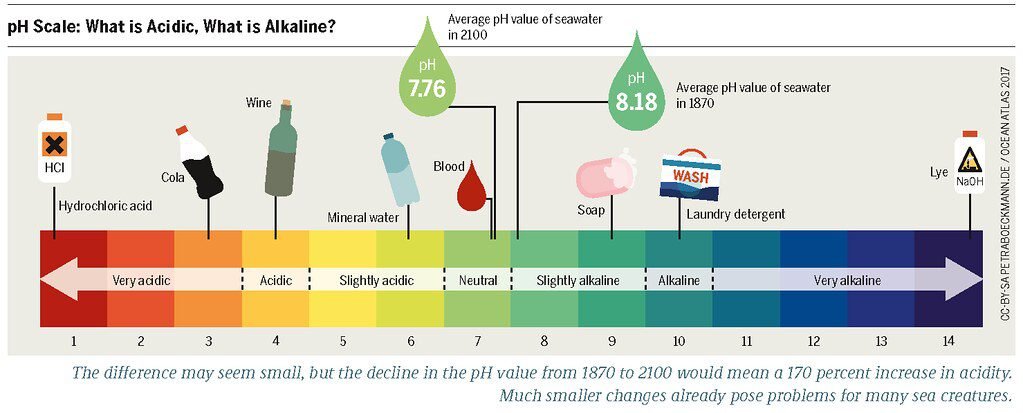Acidity of Tea Vs. Coffee: Compared Risks and Benefits
Coffee Queries is reader-supported. When you buy through links on our website, we may earn an affiliate commission. Learn More
If you enjoy tea or coffee, you might be curious about their impact on your health. You’ve probably heard that these drinks can be acidic and potentially lead to issues like acid reflux, tooth decay, or stomach ulcers. But is this accurate and if yes, then which one is more acidic, tea or coffee?
Well, both tea and coffee indeed possess acidic characteristics. However, their pH levels can fluctuate due to factors like type, origin, roast, brewing method, and additives. Now, let’s take a closer look at these questions in the following discussion.
Acidity of Tea Vs. Coffee
Tea is recognized for its lower acidity compared to coffee. Coffee typically has a pH level ranging from 4.85 to 5.10, whereas tea falls within the pH range of 6.0 to 7.2. Therefore, coffee is considered more acidic than tea.

This heightened acidity in coffee can potentially trigger issues such as heartburn, acid reflux, and various digestive discomforts in certain individuals. In contrast, tea tends to be less problematic in this regard. Before diving into specifics, let’s first explore what acidity and pH levels entail. This knowledge will enhance your comprehension of the main question at hand.
Editor’s Pick: Why Is Vietnamese Coffee So Strong?
What is Acidity and pH Level?
Acidity is a quantification of the quantity of hydrogen ions (H+) found in a solution. The higher the concentration of hydrogen ions, the greater the acidity of the solution. On the contrary, basicity is a measure of the concentration of hydroxide ions (OH-) in a solution. A solution in which hydrogen and hydroxide ions are in equilibrium is regarded as neutral.

The pH scale serves as a gauge for gauging the acidity or alkalinity of a solution, with values ranging from 0 to 14 and 7 signifying a neutral state. Solutions registering a pH below 7 are categorized as acidic, whereas those surpassing 7 are called alkaline.
The significance of the pH scale lies in a solution’s tendency to hurt or harm. To illustrate, exceedingly acidic substances can lead to chemical burns, while notably alkaline substances can induce skin irritation.
When it comes to drinks like coffee and tea, the pH scale matters because it can influence how a beverage tastes and its impact on your health. Drinks that are more acidic, like tea and coffee, often lead to problems like tooth enamel wear and stomach discomfort in certain individuals. However, studies by the National Library of Medicine also highlight that having a reasonable amount of acidic drinks like coffee (2 cups per day) can have potential health advantages such as lowering the chances of certain cancers.
Acidity in Coffee
Coffee is a complex drink with numerous compounds including some that add acidity to its taste and scent. Nevertheless, the level of acidity in coffee isn’t consistent across the board; several elements can influence how acidic your coffee turns out. Let’s delve into these factors.

Brewing Method
The acidity of coffee can fluctuate based on the brewing technique employed. For instance, coffee prepared with a French press typically exhibits greater acidity compared to coffee made using a drip coffee maker. This difference arises because the French press method permits a greater extraction of the coffee beans’ oils and acids. Below, you’ll find a table displaying the estimated acidity levels of various coffee types:
| Acidity of Coffee Based on Type of Coffee | |
| Type of Coffee | pH Level |
| Made with French Press | 6.5 – 6.8 |
| Drip Coffee | 4.6 – 5.0 |
| Brewing Espresso | 2.9 – 3.1 |
It’s important to keep in mind that the pH scale is logarithmic, meaning that every whole number represents acidity levels that differ by a factor of ten. In simpler terms, coffee with a pH of 4.6 is ten times greater than coffee with a pH of 5.6.
Typically, coffee has acidic nature, falling within a pH range of 4.0 to 5.0. This acidity may pose challenges for individuals dealing with gastroesophageal reflux disease (GERD) or acid reflux. It can lead to the relaxation of the lower esophageal sphincter, which results in heartburn and potential harm to the esophagus. Fortunately, there are coffee choices with lower acidity tailored for those who are sensitive to these effects.
Related: Black Coffee vs Milk Coffee
Roasting Process
The roasting process can also impact the acidity of coffee. When coffee beans are roasted at high temperatures, it diminishes their acidity by breaking down chlorogenic acid within the beans. This chemical transformation is called pyrolysis and leads to the creation of different acids including malic, quinic, citric, and acetic acids.
The level of acidity in coffee hinges on the roasting degree. Generally, dark roasts exhibit lower acidity levels compared to light roasts because the extended roasting time results in more chlorogenic acid breakdown. However, the choice of coffee bean type also plays a role with arabica beans tending to be less acidic than robusta beans.
Acidity in Tea
In comparison to coffee, tea is commonly regarded as having lower acidity. Nonetheless, the acidity in tea can differ based on the tea variety and how it’s brewed. Here, we will explore the varying acidity levels found in different types of tea and how brewing time can influence acidity.

Brewing Time
The duration of brewing can also influence the tea’s acidity. Brewing it for too long can bring out more tannic acid, which makes the tea seem more sour. To avoid this, it’s a good idea to stick to the recommended brewing time of around 3-5 minutes.
Just like coffee, drinking a lot of tea can lead to GERD (Gastroesophageal Reflux Disease) and acid reflux. Acid reflux happens when a valve called the lower esophageal sphincter, which normally keeps stomach acid from flowing back into your food pipe. This can cause heartburn and harm your food pipe over time.
Additional Ingredients
Some additives have the ability to alter the tea’s acidity. For instance, the introduction of lemon juice or citrus fruits can decrease the tea’s pH. Conversely, the incorporation of milk or dairy items can elevate the tea’s pH and make it more alkaline. Nevertheless, the impact varies based on the type and quantity of additives employed.
Recommended Reading: Why Does Coffee Make Me Nauseous?
Various Type of Tea
The acidity in tea is shaped by the presence of tannic acid (a naturally occurring compound found in tea leaves). Tannic acid makes tea taste a bit dry and gives it that gripping feeling in your mouth. The quantity of tannic acid can vary based on the tea type.
Green tea tends to have a lower tannic acid content, making it milder in terms of acidity compared to black tea. White tea (crafted from young tea leaves) also boasts a lower tannic acid level and results in a gentler acidity. Oolong tea falls somewhere in between green and black tea in terms of its acidic profile.
Teas created from herbs and fruits, which don’t use tea leaves, usually have a milder acidity compared to traditional teas. On the other hand, when you infuse lemon or ginger into tea, (like lemon tea or ginger tea) the added citrus or ginger can elevate their acidity levels. For information regarding the pH levels of these various tea types, check the table below:
| Level of Acidity in Different Types of Tea | |
| Tea Type | pH Range |
| Black Tea | pH 4.9 to pH 5.5 |
| Oolong Tea | pH 5.9 to pH 8.5 |
| Green Tea | pH 7 to pH 9 |
| White Tea | pH 7 to pH 9 |
| Herbal Tea | pH 3 to pH 7 |
| Chamomile Tea | pH around 7 |
| Mint Tea | pH around 7 |
| Rosehip Tea | pH below 3 |
| Lemon Tea | pH below 3 |
| Blackberry Tea | pH below 3 |
Suggested Reading: Why is Coffee Called Java?
Benefits and Risks of Consuming Acidic Drinks
Now that you’ve explored the comprehensive guide on the acidity of coffee and tea, it’s essential to understand their impact on your well-being.

Benefits
Despite being a bit acidic, Tea and coffee offer potential health perks. They’re packed with antioxidants, which are like superheroes for your cells. They protect them from damage caused by harmful molecules called free radicals. This defense system can reduce the risk of certain cancers, heart issues, and strokes.
Studies have also found that drinking tea and coffee (with 50 to 300 mg of caffeine) can give you more energy and make your brain work better. This can be really helpful if you need to stay alert and focused during the day.
Risks
While there can be some health advantages to enjoying drinks like tea and coffee, there are also potential downsides. A significant concern is that the acidity in these drinks can gradually harm your tooth enamel, which leads to tooth issues such as decay. Moreover, excessive consumption of coffee or tea may elevate your blood pressure.
This can be especially troublesome if you already have high blood pressure or are at risk for heart problems. Having too much caffeine can also result in unpleasant effects, like feeling jittery, anxious, or having trouble sleeping. To prevent these possible issues, controlling your caffeine intake is essential.
Related Reading:How to Remove Coffee Stains from Teeth: 10 Effective Ways
Final Word
In a nutshell, Tea is generally less acidic with a pH range of 6.0 to 7.2, while coffee is more acidic with a pH range of 4.85 to 5.10. The acidity of both, tea and coffee, can vary significantly due to factors like type, origin, roast, brewing method, and additives. While coffee generally leans towards being more acidic, the pH levels of both beverages can fluctuate, offering a range of taste profiles and potential health impacts.






